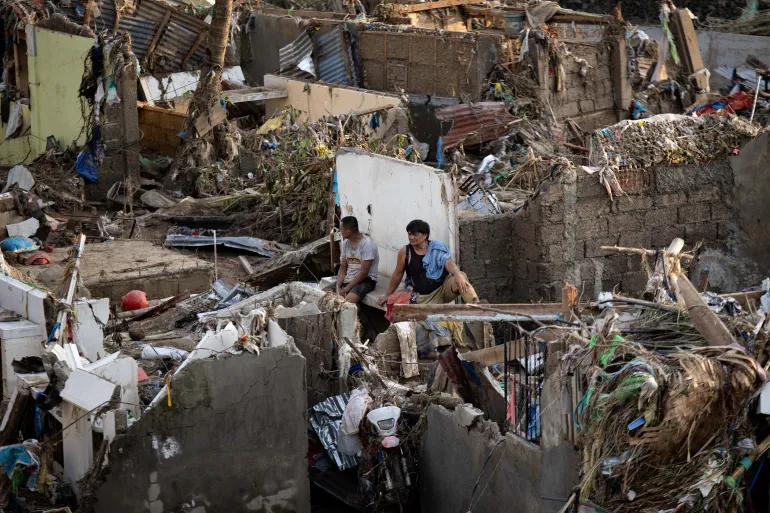The powerful Typhoon Kalmaegi battered the central Philippines and then struck Vietnam this week, leaving a trail of death and destruction as more storms loom. In the Philippines the storm killed at least 188 people and left more than 100 missing amid floods and landslides; in Vietnam at least five people died as the system blew through with fierce winds and heavy rain. Authorities in both countries now face the dual task of managing the aftermath while preparing for the arrival of a new storm.
Widespread destruction in Philippines followed by Vietnam
In the Philippines the worst-hit region was Cebu province, where homes were flattened, vehicles overturned, and families displaced after flash floods and landslides swept through. More than 500,000 people were displaced, with around 450,000 seeking shelter or staying with relatives as recovery efforts began. The government declared a national state of emergency and warned that the sheer volume of rainfall had overwhelmed flood defences and triggered rapid river surges.
Moving westward, Kalmaegi made landfall in central Vietnam, where wind gusts and torrential rain uprooted trees, ripped off roofs and knocked out power for approximately 1.3 million households. In Gia Lai and Dak Lak provinces three and two people respectively lost their lives, and authorities reported thousands of homes damaged or destroyed. The destruction came as many areas were still recovering from earlier storms this season.
Bracing for Typhoon Fung-Wong and the climate challenge ahead
While the region grapples with Kalmaegi’s aftermath, meteorologists warn that Typhoon Fung‑Wong is expected to strengthen into a super-typhoon before making landfall in the northern Philippines over the coming days. Government meteorologists said its radius is so wide it could impact nearly the entire country, especially coastal and low-lying areas already weakened by the prior storm. Emergency evacuation centres have been opened nationwide and residents urged to seek safety early.
Experts say the intensity of storms like Kalmaegi and Fung-Wong reflects a broader trend: warmer ocean waters and shifting atmospheric patterns from climate change are boosting the destructive power and unpredictability of tropical cyclones in Southeast Asia. With two major storms hitting in rapid succession, the scale of the humanitarian and reconstruction challenge has grown significantly.

